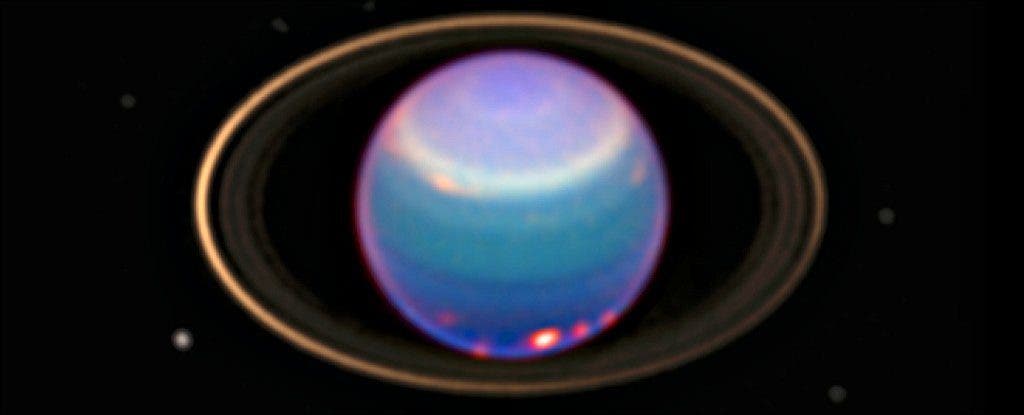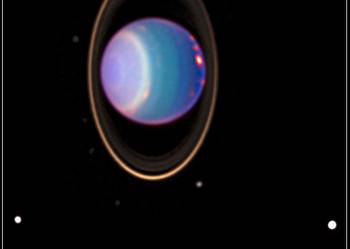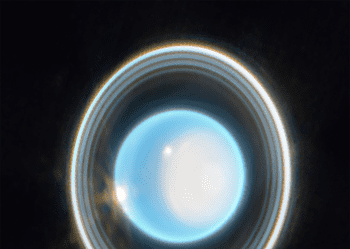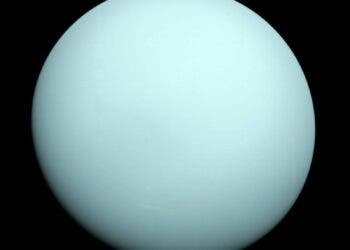Two dark shapes discovered around Uranus.

Astronomers have re-analyzed data captured by the Voyager 2 spacecraft from 1986, finding two dark shapes hidden in the rings of Uranus. They believe they might be two new moons.
Although Saturn is famous for its impressive rings, it’s not the only planet to boast them. The other gas giants, Jupiter and Uranus, also have their own ring systems. But unlike Saturn and Jupiter, Uranus is much less studied and far less understood. We don’t have as much data on it – in fact, most of the data we have on it comes from Voyager 2’s flyby 30 years ago.
Since that’s pretty much all we have to go on, a duo from the University of Idaho decided to comb Voyager 2’s data once again and see what they can find. Their search wasn’t in vain. By analyzing an unusually wavy shadow pattern in the Uranus rings, they came to the conclusion that two new moons lurk close to the planet’s ring system.
“These patterns may be wakes from small moonlets orbiting exterior to these rings,” the researchers write in their paper on the pre-print site arXiv.org.
Rob Chancia and Matthew Hedman went further and crunched some simulation numbers, arriving at the conclusion that if the moons exist they measure a meager 4 and 14 km (2 to 9 miles) across. Still, while the existence of these moons is far from being confirmed, it seems to be a definite possibility.
Mark Showalter of the SETI Institute in California, who has previously discovered moons around Uranus but was not involved in this study, told Ken Croswell over at New Scientist that the existence of the two new moons is “certainly a very plausible possibility”. At the moment, the paper is going through the process of peer review and we’ll learn much more when that’s done.
But if we really want to see if there are moons there, we should do the basic thing and start looking there. Of course, “looking” in this case means through a telescope, namely through Hubble. Showalter argues that’s the “best bet” for finding these new Uranian satellites. But if that fails then maybe Uranus should get its own orbiter mission. Jupiter got it, Saturn got it… let’s make Uranus great again






